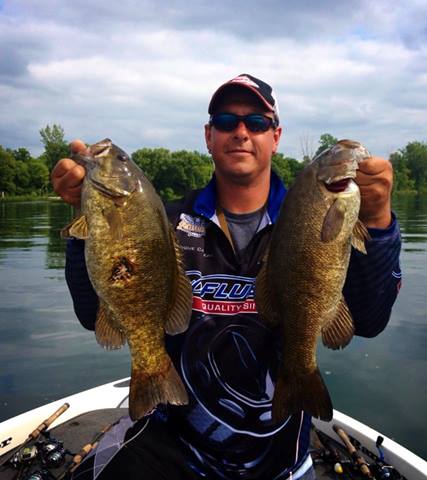
The first time visitor looking to snag large smallmouths needs to spend time learning the river. These means a lot of the first day or two should be spent casting and moving. When you do locate a great spot with plenty of smallies, mark the location on your GPS for easy reference. This is important because we are talking about a river with a width of 2 miles in many spots and as we all know it is easy to forget great fishing holes on such a large body of water.
Look for spots where channel dredging has created abrupt drop-offs, and along the banks where structure is likely to be found as these are prime spots the smallmouth will be holding in during most of the year. Mark locations in the 20 to 50 foot depth range and where the current is slow. Keep an eye on the fish finder for flats in the twenty to forty foot range, and work each of these areas. Chances are you are going to hit a smallmouth hotspot.
Look For Current Breaks
Once you have a few good locations catching smallmouth bass on the St. Lawrence River will be full of non-stop action. Using a variety of baits and presentations is the best method for finding what the fish are feeding on. Just because a promising location looks good if nothing much turns up after 30 minutes of casting and switching baits move on, because sooner or later you will find a good spot.
Colors of baits and presentations play a huge part in catching St. Lawrence River smallmouth bass due to the crystal clear water. Never get right on top of a good spot because the fish are going to either spook, or ignore the baits. Hold out at least twenty feet and use the appropriate set-up for dropping bait in as vertical a drift as possible. Allow spinners and flies to drop until out of sight and then allow them to drop more.
Pay this beautifully scenic body of prime smallie fishing a visit. After you do, catching smallmouth bass on the St. Lawrence River will become a must do fishing trip!
Have you fished this river? Please offer comments below.


